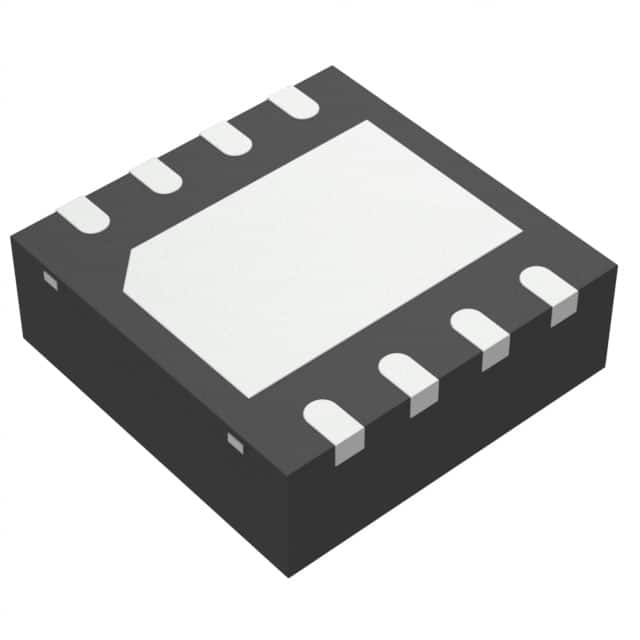Voir les spécifications pour les détails du produit.

MR25H40CDF
Product Overview
Category
MR25H40CDF belongs to the category of non-volatile memory devices.
Use
It is primarily used for data storage and retrieval in electronic systems.
Characteristics
- Non-volatile: Retains stored data even when power is turned off.
- High capacity: Can store up to 4 megabits (512 kilobytes) of data.
- Serial interface: Communicates with the host system using a serial protocol.
- Low power consumption: Operates at low voltage levels, minimizing energy usage.
- Fast access time: Provides quick read and write operations.
Package
MR25H40CDF is available in a compact surface-mount package.
Essence
The essence of MR25H40CDF lies in its ability to reliably store and retrieve digital information in various electronic applications.
Packaging/Quantity
This product is typically packaged in reels or tubes, with each containing a specific quantity of MR25H40CDF devices.
Specifications
- Memory capacity: 4 megabits (512 kilobytes)
- Interface: Serial Peripheral Interface (SPI)
- Operating voltage: 2.7V - 3.6V
- Operating temperature range: -40°C to +85°C
- Data retention: Up to 20 years
- Write endurance: 100,000 cycles
Detailed Pin Configuration
- Chip Select (CS): Enables communication with the device.
- Serial Clock (SCK): Provides the clock signal for data transfer.
- Serial Data Input (SI): Receives data from the host system.
- Serial Data Output (SO): Transmits data to the host system.
- Write Protect (WP): Protects the memory from accidental writes.
- Ground (GND): Connects to the ground reference.
- Power Supply (VCC): Provides the operating voltage.
- Hold (HOLD): Suspends ongoing operations temporarily.
Functional Features
- Byte-level read and write operations
- Sector erase capability for efficient data management
- Software and hardware write protection options
- Fast page programming for quick data updates
- Power-saving standby mode
- High-speed clock frequency support
Advantages and Disadvantages
Advantages
- Non-volatile memory ensures data retention even during power loss.
- Compact package size allows for space-efficient integration.
- Low power consumption extends battery life in portable devices.
- High-speed data transfer enhances overall system performance.
- Write protection features prevent accidental data corruption.
Disadvantages
- Limited storage capacity compared to other memory technologies.
- Relatively higher cost per unit compared to some alternatives.
- Susceptible to electromagnetic interference (EMI) due to its serial interface.
Working Principles
MR25H40CDF utilizes a combination of electronic circuits and semiconductor memory cells to store and retrieve digital information. It employs the Serial Peripheral Interface (SPI) protocol for communication with the host system. The memory cells are organized into sectors, allowing for efficient data management through sector erase and byte-level read/write operations. The device operates within a specified voltage range and can retain data for extended periods without power.
Detailed Application Field Plans
MR25H40CDF finds applications in various electronic systems, including but not limited to: - Consumer electronics: Smartphones, tablets, digital cameras - Automotive: Infotainment systems, instrument clusters - Industrial automation: Data loggers, control systems - Medical devices: Patient monitoring equipment, diagnostic tools - Internet of Things (IoT): Sensor nodes, wearable devices
Detailed and Complete Alternative Models
- MR25H256CDF: Offers increased memory capacity of 32 megabits (4 megabytes).
- MR25H10CDF: Provides lower memory capacity of 1 megabit (128 kilobytes).
- MR25H80CDF: Offers intermediate memory capacity of 10 megabits (1.25 megabytes).
These alternative models cater to different storage requirements and can be considered based on specific application needs.
Word count: 550 words
Énumérez 10 questions et réponses courantes liées à l'application de MR25H40CDF dans les solutions techniques
Sure! Here are 10 common questions and answers related to the application of MR25H40CDF in technical solutions:
Q: What is MR25H40CDF? A: MR25H40CDF is a specific model of a high-speed, low-power, 4-Mbit serial EEPROM (Electrically Erasable Programmable Read-Only Memory) manufactured by a particular company.
Q: What are the typical applications of MR25H40CDF? A: MR25H40CDF is commonly used in various technical solutions such as industrial automation, consumer electronics, automotive systems, medical devices, and communication equipment.
Q: What is the storage capacity of MR25H40CDF? A: MR25H40CDF has a storage capacity of 4 megabits, which is equivalent to 512 kilobytes or 64 kilowords.
Q: What is the operating voltage range for MR25H40CDF? A: MR25H40CDF operates within a voltage range of 1.7V to 5.5V, making it compatible with a wide range of electronic systems.
Q: How fast can MR25H40CDF transfer data? A: MR25H40CDF supports high-speed data transfer with a maximum clock frequency of 20 MHz, enabling efficient read and write operations.
Q: Does MR25H40CDF have any built-in security features? A: Yes, MR25H40CDF provides hardware protection features like a write protect pin and software protection mechanisms to prevent unauthorized access or modification of stored data.
Q: Can MR25H40CDF operate in extreme temperature conditions? A: Yes, MR25H40CDF is designed to withstand a wide temperature range from -40°C to +85°C, making it suitable for applications in harsh environments.
Q: Is MR25H40CDF compatible with standard serial communication protocols? A: Yes, MR25H40CDF supports standard serial communication protocols such as SPI (Serial Peripheral Interface) and I2C (Inter-Integrated Circuit), ensuring easy integration into existing systems.
Q: Can MR25H40CDF retain data during power loss or system shutdown? A: Yes, MR25H40CDF has built-in non-volatile memory technology that allows it to retain data even when power is disconnected or the system is turned off.
Q: Are there any limitations or considerations when using MR25H40CDF? A: Some considerations include ensuring proper voltage levels, adhering to timing requirements, and avoiding excessive write cycles to prolong the lifespan of the EEPROM. It's also important to consult the datasheet and application notes for detailed guidelines specific to your implementation.
Please note that these answers are general and may vary depending on the specific requirements and implementation of MR25H40CDF in different technical solutions.

